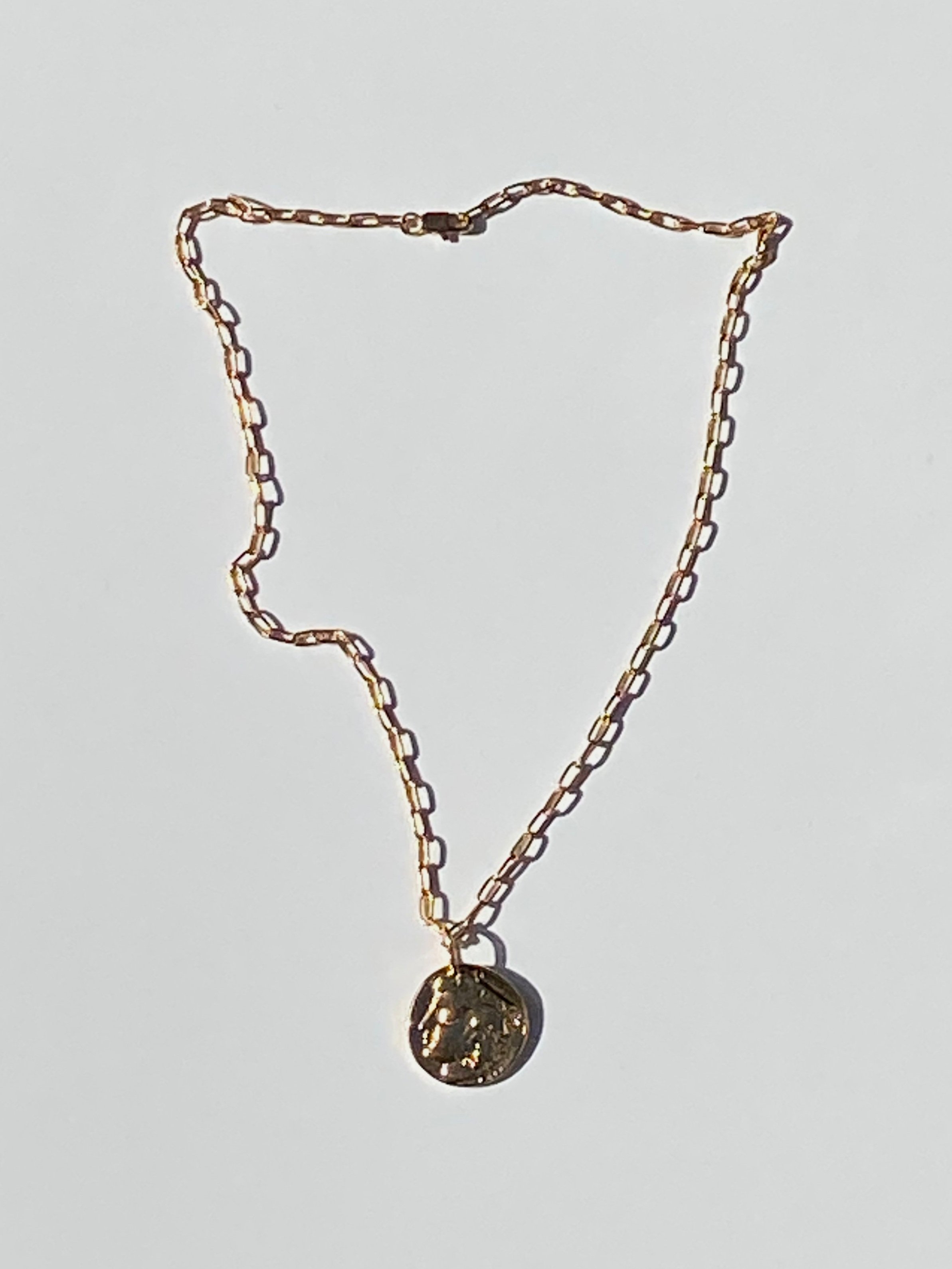The Head of Hera and The Cnossus Labyrinth Coin Necklace


The Head of Hera and The Cnossus Labyrinth Coin Necklace
Cnossus was a city in Crete and an important commercial center since the Greek Bronze Age. Cnossus’s history was rooted in myth.
The labyrinth in the obverse side of Cnossian coinage was a reference to the myth of the minotaur. The story goes as follows. King Minos of Crete prayed for a strong white bull to sacrifice to sea-god Poseidon. The god granted his wish. However, Minos saw the beauty of the animal and decided to keep it. To that purpose, he sacrificed another bull to the god. Poseidon did not like this and decided to punish the king. He then enchanted Minos’s wife Pasiphae who fell madly in love with the bull that Minos had kept for himself. From their union, a terrible beast was born. This was the Minotaur, half man and half bull.
Naturally, Minos wanted to hide the beast which was a great shame for him. To that end, he ordered Daedalus, the legendary inventor, to build a great labyrinth. Daedalus completed the work and Minos placed the Minotaur in its center. Theseus another legendary Greek hero finally slew the monster in another episode of the myth.
The labyrinth remains one of the most easily recognizable symbols on ancient Greek coins. Its importance must have been great for the people of Cnossus. The labyrinth was not simply a visual reference to the myth of the Minotaur. It was also a reminder of a legendary past where kings, heroes, monsters, and gods walked the earth. A legendary past where the Cretans dominated the world.
